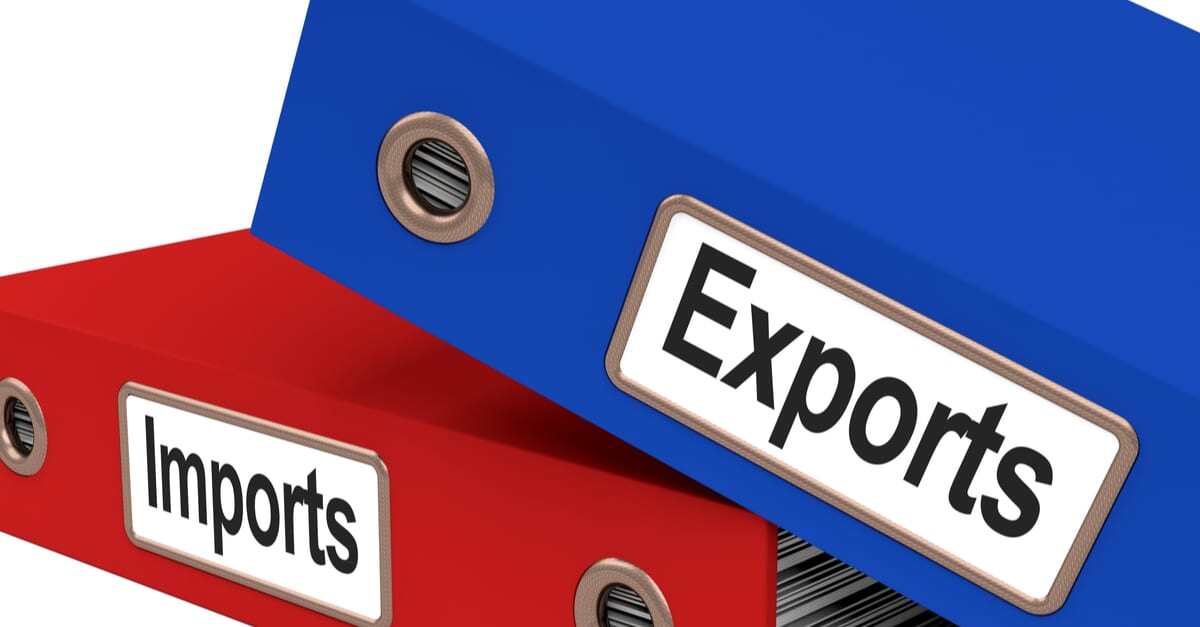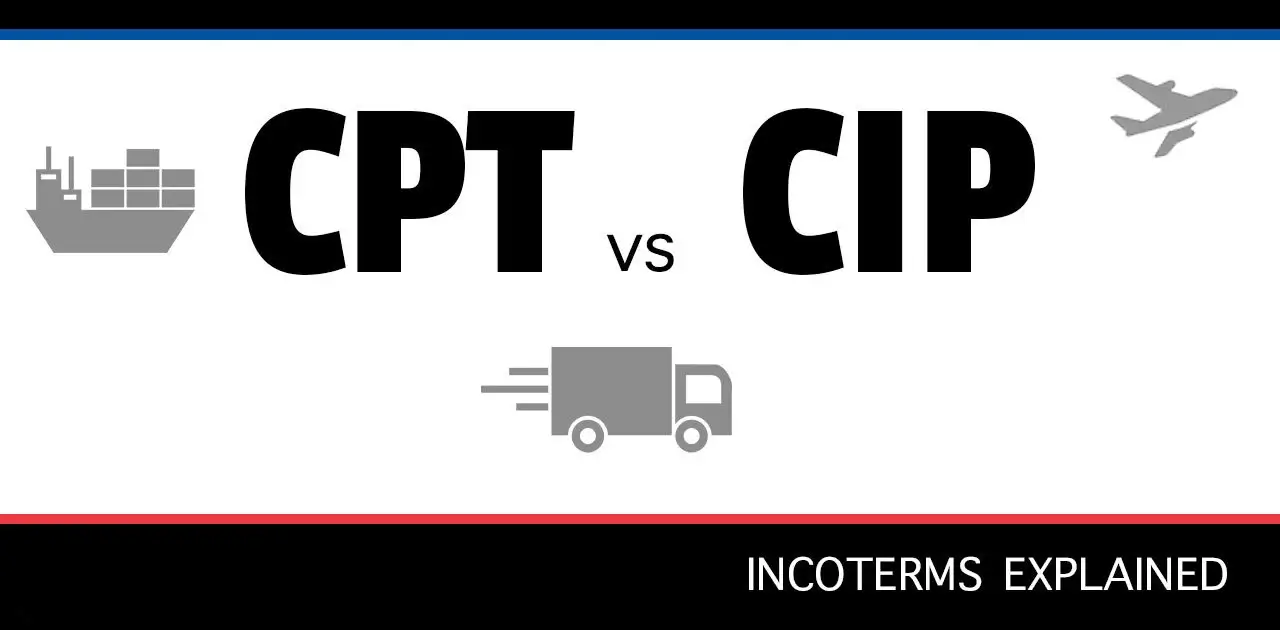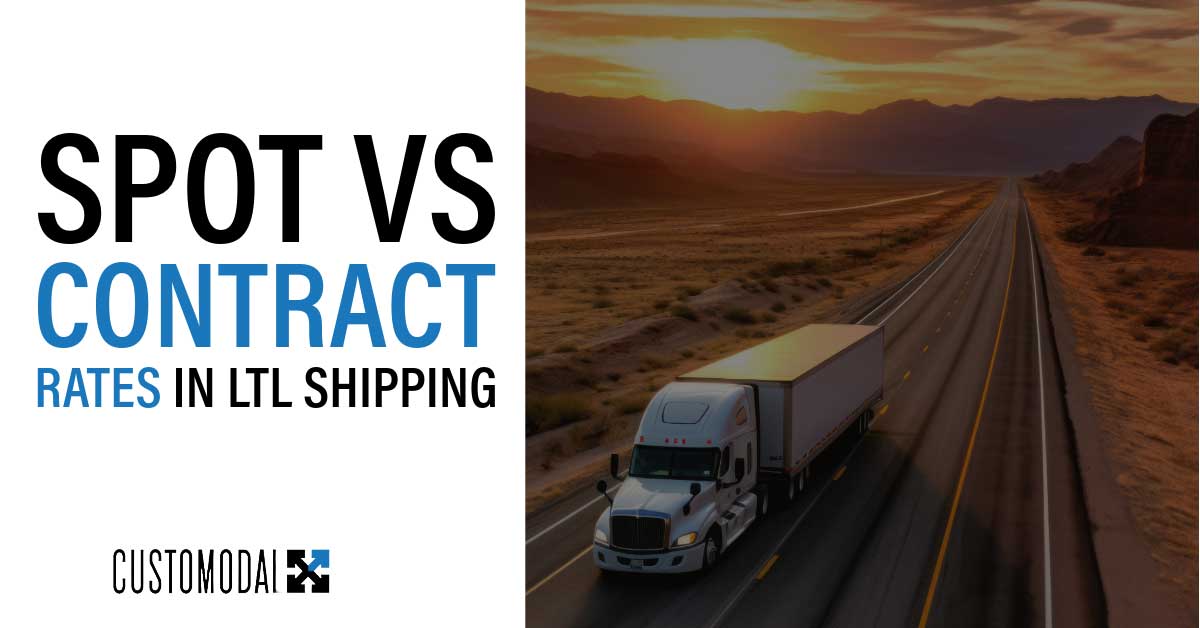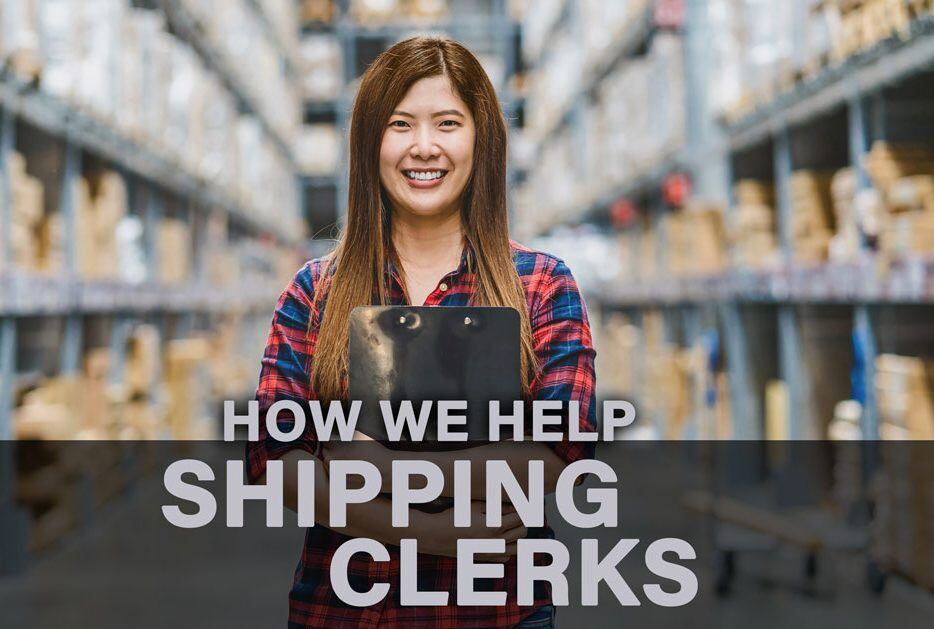
If you are shipping freight internationally, you will inevitably come across all of the different International Commercial Terms, or Incoterms for short. These are not legal regulations, per say, but more commercial regulations. These regulations are designed to keep buyers and sellers from across the globe on the same page when negotiating shipping contracts. A lot of these terms deal with similar topics but are not exactly the same thing, like Carriage and Insurance Paid (CIP) and Cost Insurance and Freight (CIF).

So, what is the main difference between CIF and CIP? The main difference between CIF and CIP is where the insurance and logistical responsibility for freight shifts. For CIF, it is the moment the freight reaches the dock of import. For CIP, it transitions more gradually to when delivery at buyer destination occurs.
CIP is a relatively new Incoterm better designed than CIF to handle the realities of 21st century container shipping. To learn more about when to use each one, read below about their specific qualities.
How CIF Works
CIF has been around for well over a hundred years. Essentially, the seller is responsible for the sold goods until loaded onto the ship. They still cover the insurance while the ship sails but are virtually uninvolved once it arrives in the destination country’s port. Today, CIF is mostly associated with cheaper goods and smaller ships, concerning freight that is not packed into containers and loaded onto large container ships. Rather, these goods are simply put on the ship and that is it. Here is a specific breakdown of buyer and seller responsibilities in CIF throughout the shipping process:
- Loading at origin: seller
- Export customs declaration: seller
- Carriage to port of export: seller
- Unloading of truck in port of export: seller
- Loading on vessel in port of export: seller
- Carriage to port of import: seller
- Unloading at port of import: buyer
- Loading on truck in port of import: buyer
- Carriage to place of destination: buyer
- Import customs clearance: buyer
- Import duties and taxes: buyer
- Unloading at destination: buyer
Probably the best thing about Incoterm standards is that granular level of detail to every single step in the freight transportation process. No stone is left unturned. Let’s explain what each of these means relative to CIF first. Later we will do the same for CIP.
1. Loading at Origin
Loading at origin refers to the very initial part of a shipping process, when the goods are first loaded onto a vehicle for transport to the shipping dock. This can be done:
- By hand
- At a dock with pallet jacks
- With forklifts

It really all depends how big and heavy the goods are. Naturally, all costs and insurance with this step is allocated to the seller. They could either do this with a private carrier, or by themselves. Either way, the seller is responsible.
2. Export Customs Declaration
Export customs declaration is when the shipper tells their respective country’s customs authority a variety of things about the shipment:

- Contents
- Value
- Carrier
Regulatory authorities need to confirm that no banned or illicit products are being shipped before they are sent on their way, so everything must pass through them first before it is loaded on a ship or plane. They tend to only scan or open suspicious packages though, so the shipper is always required to declare what they have. That is always the responsibility of the shipper. Insurance is generally irrelevant here, except pertaining to the overall shipping process.
3. Carriage to Port of Export
Carriage to Port of Export describes the movement of the freight from the shipper’s location to the actual port or airport from which it will begin its journey. This was generally decided already during the loading at origin step. The carrier is typically the seller themselves, if they are accustomed to frequently shipping internationally, or a private carrier such as:
While DHL is by far the most common internationally recognized shipper for smaller freight shipments, there are plenty of others for shipments large and small.
Carriage to port of export is always paid for, and insurance is always arranged by, the seller for both CIF and CIP.
4. Unloading of Truck in Port of Export
This step specifically describes when the truck is unloaded, after arriving on its journey from the seller, but before the contents are actually loaded on the vessel or airplane. While this step is one of the most likely scenarios where (from contents shifting in the truck during the journey) your freight can get damaged, the seller is still fully responsible for paying during CIF. The same applies for insurance.
5. Loading on Vessel in Port of Export
This step in the transportation process is when the freight itself is loaded onto the actual vessel (or airplane) that will be moving it between the two countries in question. Typically, this is done by the carrier with their own equipment, not the buyer or seller. Nevertheless, in CIF, the seller is fully responsible for the cost and insurance associated with everything.

If you are a seller reading this and are tired of paying and insuring everything, I assure you, hope comes a lot faster under CIF than CIP. But if even this is too much for you, you may want to consider some other Incoterm options such as:
- EXW
- FCA
- FAS
- FOB
- CPT
- CFR
All of which trigger the buyer acting significantly earlier in the process than CIF. In fact, the buyer is responsible for absolutely everything in EXW.
6. Carriage to Port of Import

This is the main part of the journey via ship (or airplane if applicable) from one country’s port to the other. While typically the seller is not responsible for actually doing this (unless on the off chance they own a fleet of cargo ships or an airline), they are still responsible for paying for this voyage and insuring it.
7. Unloading in Port of Import
Once the freight reaches the port of the buyer’s country, it must be unloaded off the ship. This is done by:
- Crane Machinery
- Dock Workers
- Ship’s Crew
Unload methods vary largely on the economic infrastructure of the country. The seller stays responsible for the insurance for all of the transportation process up until the freight is unloaded at the destination/buyer’s location. However, for the first time in the process, the buyer is responsible. Under CIF the buyer is responsible for unloading the freight (or paying the cost to do so). Therein lies a major advantage of CIF.
8. Loading on Truck in Port of Import
This is another tricky part in the process. What kind of trucks are they using exactly? Are they strong and reliable? Well maintained? Yes, the buyer has to pay for this part in CIF. But do not forget, the seller is still insuring everything here. It might do you some good to see how qualified the carrier is, even if you are the seller of the goods.
9. Carriage to Place of Destination
Another relatively easy freight transportation step to understand, carriage to place of destination is simply when the goods are brought from the port to the buyer’s doorstep. This could be done by:
- The buyer’s own vehicles or equipment
- DHL or other parcel carrier
- A local freight carrier
- The local postal service (for smaller shipments only)
At the end of the day, the buyer is paying for it in CIF, so it typically ends up being the cheapest way unless it is a high value item. In that case, the seller might prefer a better carrier because they are paying the insurance on the product.
Here in lies one of the problems with CIF which would eventually cause the development of CIP to take over for it in some cases: the buyer is paying for the carrier to deliver in his home country, but is not responsible for the product if it gets:
- Damaged
- Destroyed
- Stolen
The financial incentive for him in that case is to pay for the cheapest possible carrier because if something goes wrong, who cares? Well, the seller does, since he is responsible. The worse the carrier, the higher the insurance. The seller wants cheaper insurance, which means a more expensive carrier.
10. Import Customs Clearance
Import customs clearance simply checks to make sure the freight is actually able to make it through customs. Remember what specifics customs is looking for:
- Contents
- Value
- Carrier
Often the rules and regulations about these qualities can vary from country to country, sometimes quite significantly. CIF recognizes that it cannot be the seller’s responsibility to know every little shipping law about every other country on Earth besides his own. Therefore, CIF dictates this responsibility to the buyer. If you are a buyer, it is a good idea to make sure that what you are purchasing can actually make it through customs before completing the transaction.
11. Import Duties and Taxes
It is essentially as it sounds: importing is not always free. Although a broad label, this can refer to costs like:
- Shipping duties
- Taxes
- Tariffs
- Handling Fees
Some countries do not have any. Some have all four. Either way, CIF directs this responsibility to the freight buyer. Read all of the different import duties and taxes of your home country before placing your freight order.
12. Unloading at Destination
Last but not least, the freight finally makes it through all these steps and arrives at the customer’s destination, or the delivery location. In CIF (and, actually, in every Incoterm method except DPU) it is the buyer’s responsibility to unload at the destination and pay for any associated costs.
This seems kind of obvious when the buyer is located at the same place as the delivery, as they would be expected to take everything off the truck or trucks and have the equipment necessary to do so. Since the buyer pays for the carrier from the destination port, they also make sure that the carrier has the equipment to unload the products, if the buyer does not have any.
Similarly, if the delivery location is somewhere other than the buyer’s location, the buyer must make sure:
- The carrier will have the equipment deliver the freight
- A receiver will be on site with that equipment (if not provided by the carrier)
- The receiver will know where to drop the freight
- The receiver will be able to sign for the freight

How CIP Works
CIF generally worked really well for decades. However, as we alluded to earlier, there are a few parts of the process that inherently cause conflict. So, while CIF is still used, CIP was developed as an alternate and added to the Incoterm guidelines in 2010. It addresses the conflicts with CIF and makes a few changes.
Before we go into those, keep in mind the following freight shipping steps, in terms of payment and insurance responsibility, are exactly the same in both CIF and CIP. I have kept the same numbers used earlier for your convenience:
- Loading at origin: seller
- Export customs declaration: seller
- Carriage to port of export: seller
- Unloading of truck in port of export: seller
- Loading on vessel in port of export: seller
- Carriage to port of import: seller
- Unloading in Port of Import: seller
- Loading on Truck in Port of Import: seller
- Carriage to Place of Destination: seller
- Import customs clearance: buyer
- Import duties and taxes: buyer
- Unloading at destination: buyer
The steps in between are the ones that are really different. Let’s go over those, along with the newfound benefits of the different CIP steps.
7. Unloading in Port of Import
In CIP, unloading in port of import is the responsibility of the seller, not the buyer like it is in CIF. While this creates more work for the seller, they can make sure that their insurance is going towards covering a worthwhile method. The seller is no longer insuring a process of which he has no idea how it works. Instead he may have an eye on the unloading through a dock that he owns or regulates. Or, more likely, he chooses an unloading company that he knows and trusts.
8. Loading on Truck in Port of Import
Once the freight is unloaded off the ship or airplane, it is loaded on to vehicles for delivery. In CIP, this process is also under the control, via payment, of the seller. This makes sure no damage can occur to the freight during this delicate process. More expensive? Yes. But if you have to pay insurance for something, don’t you want to make sure it is done correctly? Sometimes, if you want something done right, you have to do it yourself.
9. Carriage to Place of Destination
Unloading and loading at the import country’s dock can sometimes still be partially paid (and therefore partially controlled) by the buyer, even under CIP. It depends on the specific buyer and seller agreement. However, carrier to place of destination cannot be disputed. Under CIP, that is completely paid for and insured by the seller, not the buyer.
By doing this, the seller is effectively in control of the entire freight shipping process from the moment it leaves his facility all the way to the buyer’s doorstep. Of course, this gets expensive, but if you are paying the insurance, CIP gives you much more control to make sure you will not actually have to use that insurance. You can designate your own carrier who you trust to make sure the freight is successfully delivered. However, this disregards the buyer’s local knowledge that he could have otherwise used with CIF.
I Am the Seller. Which Freight Insurance Should I Buy for My CIF or CIP Transaction?
There are actually plenty of freight insurance companies available out there that are CIF and CIP compliant. Just double check with them before finalizing your purchase to make sure that they will cover your freight’s:
- Contents
- Value
- Shipping Method
- Carriers
- Country of Origin
- Country of Destination
Various things like duties and taxes especially can affect insurance rates as well. Below are three freight insurance carriers available:
- DB Schenker– Located in the United States, this company has the added benefits of offering insurance for your freight even while it’s in the warehouse during storage. They also offer Pen Cargo Insurance, which covers freight not stored in containers. This is great for CIF, when this carrier method is more common. Not all companies do this.
- UPS Capital– They are part of UPS’s massive shipping company umbrella. One of the main advantages here is that, if UPS is also your carrier, you can take care of everything with them. That will greatly simplify your paperwork and payment schedule. However, they do not cover as much as some of the other companies.
- Freight Insurance Direct– This is not actually one specific company, but rather a convenient tool that lets you put in your specifications and get a discounted, wholesale quote from a lot of different insurers. Then you can shop and choose from various levels of quality and price.
- Don’t forget to check with your Freight Forwarder for this coverage. They will frequently offer an All-risk insurance product geared exactly for the coverage needed on a shipment-by-shipment basis that is convenient to select.




